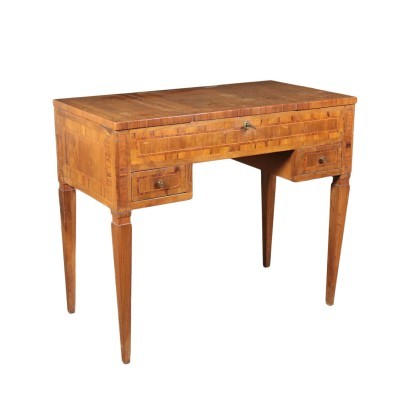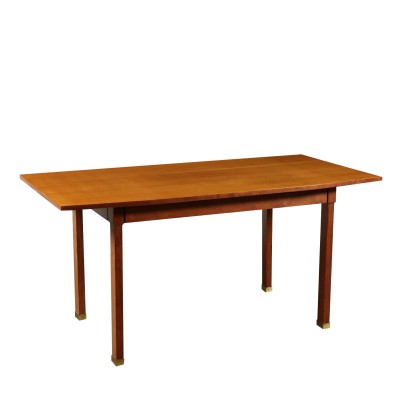Neo-Classical Revival Desk Walnut Veneer Italy 20th Century
Features
Style: Neo-Classical Revival
Age: 20th Century / 1901 - 2000
Origin: Italy
Main essence: Brazilian Rosewood , Walnut
Description
Neo-classical revival desk supported by pyramidan truncated legs; it has 2 small lateral drawers placed under the undertop band in the middle of which there is the keyhole that opens the central part of the top that hides a compartment with mirror. Walnut veneer with threadings.
Product Condition:
Fair condition. Wear consistent with age and use.
Dimensions (cm):
Height: 74,5
Width: 87
Depth: 48
Additional Information
Style: Neo-Classical Revival
Ripresa stilistica, del 900, delle forme proprie dello stile Neoclassico ('700)Age: 20th Century / 1901 - 2000
20th Century / 1901 - 2000Main essence:
Brazilian Rosewood
It is a hard, light blond wood, but with strong red and pinkish veins, which is obtained from tropical trees similar to rosewood. Its veins are reminiscent of striped tulips, which is why it is called tulipwood in English-speaking areas. It is used for inlays, often combined with bois de violette. In the 1700s and 1800s it was highly appreciated and used in France and England for precious veneers. It gives off scent for decades if not centuries after curing.Walnut
Walnut wood comes from the plant whose botanical name is juglans regia , probably originally from the East but very common in Europe. Light or dark brown in color, it is a hard wood with a beautiful grain, widely used in antique furniture. It was the main essence in Italy throughout the Renaissance and later had a good diffusion in Europe, especially in England, until the advent of mahogany. It was used for solid wood furniture and sometimes carvings and inlays, its only big limitation is that it suffers a lot from woodworm. In France it was widely used more than anything else in the provinces. In the second half of the eighteenth century its use decreased significantly because mahogany and other exotic woods were preferred. Alternative proposals






















